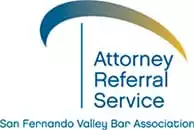What Is Intellectual Property and How Can You Protect It?
Property is normally thought of as tangible assets, like a house, car, or real estate. It is usually viewed as something you can see and touch. But there is another kind of property just as important to have and protect.
And that is intellectual property.
Intellectual property refers to any creation of the mind, like inventions, names, symbols and images used in commerce, literary and artistic works. Intellectual property is traditionally divided into two categories – Industrial Property and Copyrights.
Industrial property includes such things as patents for inventions, trademarks, industrial designs, and what is called “geographical indications.”
Copyright refers to literary works, such as books, poems and plays, films, music, works of art, and architectural design. Works of art can include drawings, paintings, photographs, and sculptures.
There are other rights related to copyright, and they include the work of performing artists in their performances as well as producers of audio material in their recordings, and also broadcasters in their radio and television programs.
Intellectual property rights
Similar to perhaps the better-known property rights, intellectual property rights also allow owners or creators of personal information to protect their creative invention. Individuals can get that protection through patents, trademarks or copyrighted works.
Intellectual property rights are stated in the Universal Declaration of Human Rights, Article 27. The article provides the right for intellectual property owners to benefit from the protection of material and moral interests resulting from their authorship of literary, artistic or scientific productions.
Patents
A patent is an exclusive right for a person to invent a product or process that provides a new kind of service, a new way of doing something, or a new technical solution to a problem. A patent provides patent owners with protection under the law for their inventions.
Protecting patents
To secure a patent, the owner has to file an application that contains the title of the invention, along with an indication of the product’s technical field and a description and background information on the development of the product.
Patent filing information must be in sufficient detail and clarity that an average person with an understanding of the technical field could duplicate or reproduce the invention. The detail might include drawings, diagrams or plans and whatever claims the owner is making for protection. Patents are typically granted for a 20-year period.
There are millions of patent documents in existence. It would be a good idea to search an international database of patents before attempting to file a new one.
Trademarks
In ancient times, craftsmen identified their creations with some kind of personal marking. This was their personal signature and indicated their ownership of the particular design and application of the product.
Today, these personal marks are still being recognized but a bit more formally through a system of trademark registration and protection. The process allows a manufacturer to identify its product or service – and level of quality and performance – as its own with a particular style and functionality, unlike its competitors. The process helps consumers decide which products or services to buy.
Protecting trademarks
A trademark sign or symbol must be unique and distinctive so that consumers can distinguish it from other trademarks. It cannot be deceptive and cannot mislead consumers or be immoral. It cannot be similar to an already existing trademark, and it cannot have rights assigned to it that have already been granted to another trademark owner.
An application for trademark must be filed with the appropriate trademark office, either regional or national. The application must contain a clear representation of the sign being registered including forms, colors and any three-dimensional features.
The application should also contain a list of goods or services to which the sign or symbol would apply.
Copyrights
Copyright laws protect the literary and artistic works of authors, artists, and other creative people. Copyrights also protect the “related rights” of creative individuals.
Materials covered by copyright laws include such things as:
- Performances by actors and musicians
- Sound recordings (compact disks, etc.) by producers
- Radio and television programs by broadcasting companies
- Novels, plays, poems, newspapers, reference works, advertisements, computer programs
- Databases, films, drawings, photographs, paintings, maps
- Musical compositions, choreography
- Architecture, sculptures
Protecting copyrights
Everyone has a natural right to be the first publisher of their own information. Copyright and related rights are granted automatically without the need for registration. However, many countries offer optional registration to facilitate any disputes over ownership, or sale or transfer of rights.For information on U.S. registration, you can contact the U.S. Copyright Office.
Industrial designs
An industrial design is the aesthetic aspect of an item. It refers to the ornamental aspects such as three-dimensional design (shape or surface) or two-dimensional design (patterns, color or lines).
Protecting industrial designs
An industrial design has to be new or original and non-functional. It is purely aesthetics or ornamental. Any functional features may be covered by patents. There can’t be any similar designs in existence.
An industrial design must be registered and a certificate issued. Protection is granted for five years with the possibility of renewing for another 15 years.
Geographical Indications
A geographical indication is a sign used to indicate that goods possess characteristics or qualities due to their geographic location. Usually, the geographic indicator contains the name of the place of origin.
Geographic indicators are often used with agricultural products to signify a certain location with particular climate and soil. An example would be “Napa Valley” for a particular wine or “Roquefort” for a particular cheese or dressing. Each represents a unique geographical region and enables consumers
Protecting geographical indications
Geographical indications are protected by a wide range of laws including those against unfair competition, consumer protection laws, laws for protecting certification marks, and laws specifically designed for the protection of geographic indications.
Violation of geographic indications can lead to court injunctions, fines, or even imprisonment.
United States Patent and Trademark Office (USPTO)
The USPTO is a federal agency service that advises the President (through the Secretary of Commerce) and all federal agencies on national and international policy issues regarding intellectual property.
The USPTO is authorized by statute to conduct programs and strategies, provide counseling and advice, and to interact with IP offices worldwide on intergovernmental, international issues regarding intellectual property.
The World Intellectual Property Organization
The World Intellectual Property Organization (WIPO) helps protect the rights of creators and owners of intellectual property. Established in 1970, it is a largely self-financed organization that offers international registration and filing systems. It also publishes helpful information and offers mediation and arbitration services.
Are you in search for a certified attorney to represent you?
Let us help you find one today!




